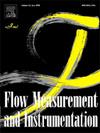基于锥滑阀组合调节原理的自适应阻尼器研究
IF 2.3
3区 工程技术
Q2 ENGINEERING, MECHANICAL
引用次数: 0
摘要
在半导体制造的湿法工艺中,液体供应系统的高可靠性和安全性至关重要。波纹管泵输出液体的脉动会导致管道振动,从而降低系统的使用寿命和可靠性,造成潜在的部件损坏,最终降低工艺产量。为解决这一问题,本文提出了一种基于锥滑阀调节组合的自适应阻尼器,专门用于缓解供液系统中的脉动。通过建立阻尼器的数学模型,我们研究了影响其脉动吸收率和响应特性的参数,并开发了一个原型。实验结果表明,增大气室容积和减小波纹管刚度可显著提高阻尼器的脉动吸收率。控制阀的有效流通面积会影响系统的响应特性。在不同的系统压力和输入流量下,阻尼器都能表现出出色的脉动抑制性能。实验验证了所提出的设计方法和阻尼器模型,为优化半导体湿法工艺中的液体供应系统提供了理论基础和技术支持。本文章由计算机程序翻译,如有差异,请以英文原文为准。
Research on adaptive damper based on cone-slide valve combination regulation principle
In the wet process of semiconductor manufacturing, the high reliability and safety of the liquid supply system are crucial. The pulsation of liquid output from bellows pumps can cause pipeline vibrations, leading to reduced system lifespan and reliability, potential component damage, and ultimately decreased process yield. To address this issue, this paper proposes an adaptive damper based on a combination of cone-slide valve regulation, specifically designed to mitigate pulsations in the liquid supply system. By establishing a mathematical model of the damper, we investigated the parameters affecting its pulsation absorption rate and response characteristics, and developed a prototype. Experimental results indicate that increasing the gas chamber volume and reducing the stiffness of the bellows significantly enhance the damper pulsation absorption rate. The effective flow area of the control valve influences the response characteristics of the system. The damper demonstrates excellent pulsation suppression performance with varied system pressure and input flow rates. The proposed design method and damper model are experimentally validated, providing a theoretical foundation and technical support for optimizing liquid supply systems in semiconductor wet processes.
求助全文
通过发布文献求助,成功后即可免费获取论文全文。
去求助
来源期刊

Flow Measurement and Instrumentation
工程技术-工程:机械
CiteScore
4.30
自引率
13.60%
发文量
123
审稿时长
6 months
期刊介绍:
Flow Measurement and Instrumentation is dedicated to disseminating the latest research results on all aspects of flow measurement, in both closed conduits and open channels. The design of flow measurement systems involves a wide variety of multidisciplinary activities including modelling the flow sensor, the fluid flow and the sensor/fluid interactions through the use of computation techniques; the development of advanced transducer systems and their associated signal processing and the laboratory and field assessment of the overall system under ideal and disturbed conditions.
FMI is the essential forum for critical information exchange, and contributions are particularly encouraged in the following areas of interest:
Modelling: the application of mathematical and computational modelling to the interaction of fluid dynamics with flowmeters, including flowmeter behaviour, improved flowmeter design and installation problems. Application of CAD/CAE techniques to flowmeter modelling are eligible.
Design and development: the detailed design of the flowmeter head and/or signal processing aspects of novel flowmeters. Emphasis is given to papers identifying new sensor configurations, multisensor flow measurement systems, non-intrusive flow metering techniques and the application of microelectronic techniques in smart or intelligent systems.
Calibration techniques: including descriptions of new or existing calibration facilities and techniques, calibration data from different flowmeter types, and calibration intercomparison data from different laboratories.
Installation effect data: dealing with the effects of non-ideal flow conditions on flowmeters. Papers combining a theoretical understanding of flowmeter behaviour with experimental work are particularly welcome.
 求助内容:
求助内容: 应助结果提醒方式:
应助结果提醒方式:


